TMJ Treatment – Fresno, CA
In Severe Jaw Pain? We Can Help!

If you place your fingers right in front of your ears and open your mouth, you can feel your temporomandibular joints, also known as the TMJs. These key joints anchor your lower jaw to the rest of your skull and allow it to perform the movements necessary for speaking and eating. However, even a small amount of stress can end up throwing off the balance of your TMJs, leading to the very painful TMJ disorder (TMD). If you keep waking up with jaw pain every day, call our dental office to schedule a consultation; if Dr. Byron L. Reintjes determines that you’re suffering from TMJ disorder, he can help you find a solution so that you can get back to enjoying life free of discomfort thanks to TMJ treatment in Fresno, CA.
Why Choose the Fresno Family Dental Office of Byron L. Reintjes, DDS for TMJ Treatment?
- State-of-the-Art CT/Cone Beam Scanning Technology
- Digital Impressions for Custom-Fit Occlusal Splints
- Caring Dentist with Three Decades of Experience
What Is TMJ Disorder?
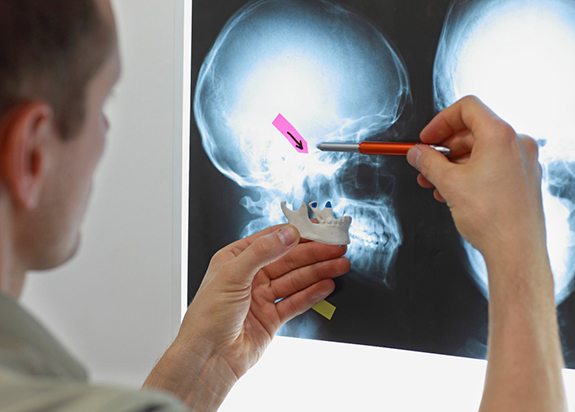
The joint that connects your jaw to your skull is incredibly delicate and complex. Unfortunately, because it is also one of the most frequently used joints in the human body, any problem in the TMJ or its surrounding tissues can cause a great deal of severe, lingering discomfort.
TMJ disorder can develop for a variety of reasons, including injury to the face, stress, bruxism (chronic teeth grinding and jaw clenching), bite misalignment, and even the onset of arthritis. However, in some situations, the exact cause of TMD remains unknown.
Symptoms of TMJ Disorder
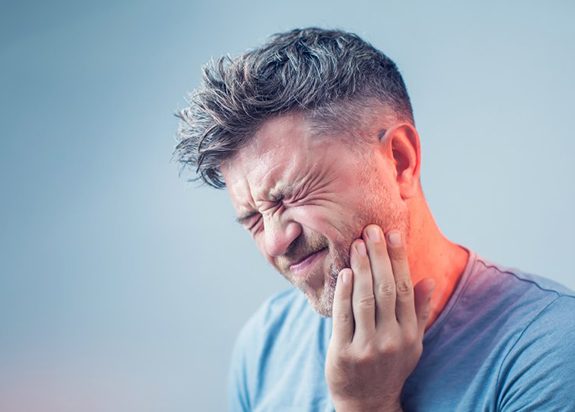
While pain and soreness in the jaw is one of the most common symptoms of TMD, it can cause several additional symptoms. For example, you may have TMD if you experience:
- Clicking or popping sounds when moving your jaw.
- Ringing and/or pain in your ears.
- Pain in your temples, shoulders, upper back, and other nearby areas of your body.
- Difficulty opening or closing your mouth.
- Frequent headaches or migraines.
- Difficulty chewing.
Types of TMJ Treatment

If you’ve been experiencing any of the aforementioned symptoms of TMD, seeking a professional opinion is important for receiving the relief you need. Dr. Reintjes will talk to you about your symptoms, examine your bite, and perform additional diagnostic procedures (such as a CT/ cone beam scan) to determine the cause of your discomfort. If it is TMD, that’s actually good news — getting a proper diagnosis is a big step in the right direction. Once we’ve identified the problem, we can treat the issue with one or more of the following methods.
Occlusal Splints
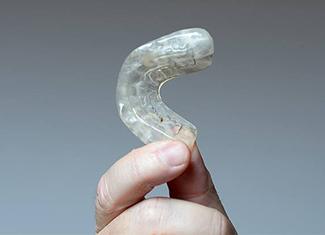
If a misaligned bite is to blame for your TMD symptoms, then your dentist in Fresno, CA may recommend an occlusal splint. This personalized appliance can gradually adjust the jaw joints to ensure they work smoothly when you open and close your mouth. Most occlusal splints are worn at night while you sleep, repositioning the alignment of your jaw over time. The splints can also cushion the tooth enamel to protect it from nighttime teeth grinding and jaw clenching that often occurs alongside TMD.
Equilibration/Occlusal Adjustment
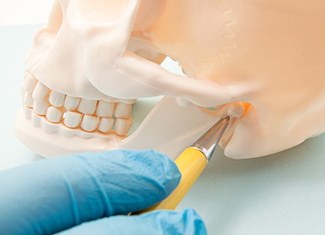
When your upper and lower teeth do not fit together properly, the jaw joints incur stress every time you open and close your mouth. Improving the alignment of the bite through equilibration or occlusal adjustments can help both of your jaws function smoothly, which can greatly reduce your TMJ pain. Treatment may include adjusting tooth enamel, repositioning restorations like crowns, or even removing teeth to achieve a properly aligned bite.
Treatment with a TENS Machine
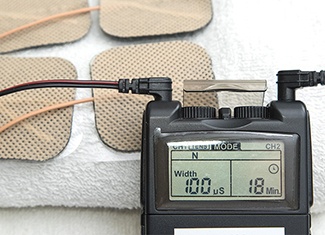
To ease the discomfort caused by TMD while also reducing the activity that causes tension in the jaw muscles, Dr. Reintjes may use a TENS machine. This device (whose name stands for “transcutaneous electrical nerve stimulation”) sends tiny, painless electrical impulses directly beneath the skin, calming the muscles that habitually contract and cause discomfort. It’s like a self-massage for your jaw, providing you with serious relief from TMD-related pain.
TMJ Treatment FAQs
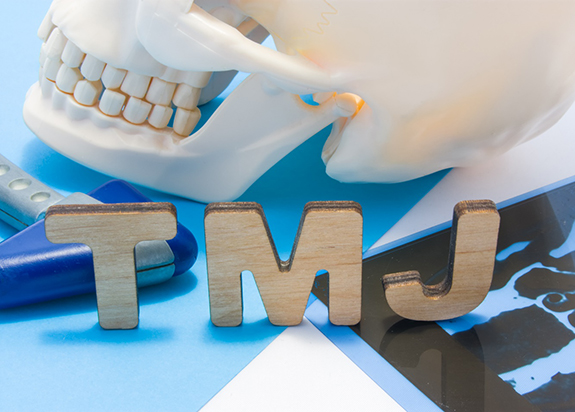
The more you know about TMJ disorder and the solutions available for it, the easier it will be to put a stop to your pain for good. When you visit our office for a TMJ consultation, let us know right away if you have any questions; our team will be happy to put any concerns you have to rest. For patients who prefer to do their own research, the following FAQs provide detailed answers to some of the questions that we’ve heard most often.
Is TENS Treatment for TMJ Disorder Safe?
TENS treatment is noninvasive and doesn’t require you to take any special medication. As such, it’s safe for most people to use. However, it’s generally not recommended for anyone who is pregnant, might become pregnant, has epilepsy, uses a pacemaker, or suffers from heart disease. Let us know right away if any of these situations apply to you.
It should be noted that while there are TENS machines that can be purchased over the counter, it’s better to have the treatment performed by a professional; that way, you’ll have an expert keeping an eye on the entire process.
How Long Does TMJ Treatment Take?
The answer to that question depends on what kind of TMJ treatment you’re using:
- TENS Machine: Treatment with a TENS machine can significantly reduce your discomfort almost immediately. That said, without additional treatments that address the root of your TMJ disorder, the pain will likely return.
- Equilibration/Occlusal Adjustments: The amount of time it takes to experience lasting relief after an occlusal adjustment varies depending on what kind of changes are required to restore balance to your bite.
- Occlusal Splints: You’ll need to wear your occlusal splint every night for a set period of time to properly treat the cause of your TMJ disorder. The timeline can be anywhere from a few weeks to several months.
Does Occlusal Adjustment for TMJ Disorder Hurt?
Occlusal adjustments usually involve removing a very small amount of enamel from your teeth. In other cases, we might have to build up your teeth with small amounts of composite resin. Regardless of what changes are required, our team will always put your comfort first. We may apply a local anesthetic to keep the area around the teeth in question numb during your treatment. You may experience some mild soreness for a few days, so take ibuprofen or another over-the-counter painkiller if you need to.
Is TMJ Treatment Covered by Insurance?
Unfortunately, there’s no universal answer to that question. Some insurance companies only pay for TMJ therapy if they’re required to by the state, and even then, they may still put a limit on what kinds of treatments are eligible for coverage.
Additionally, TMJ therapy can fall under either dental insurance or medical insurance. It largely depends on what caused the condition in the first place, how severe it is, and what kind of treatment is required.
You should call your insurance provider to clarify what coverage is offered for TMJ treatments. We can review your plan with you and file the necessary claims so that you can take advantage of any benefits that you’re entitled to.
I Need a Checkup & Cleaning I Need a Dentist for My Child I am Worried About Bleeding Gums I Have a Cavity or Broken Tooth I am Missing One or More Teeth I am Unhappy with My Smile I Want a Straighter Smile I am Interested in Sleep Apnea I am Scared of the Dentist I am in Pain & Need Help I Need My Wisdom Teeth Removed View Our Services

